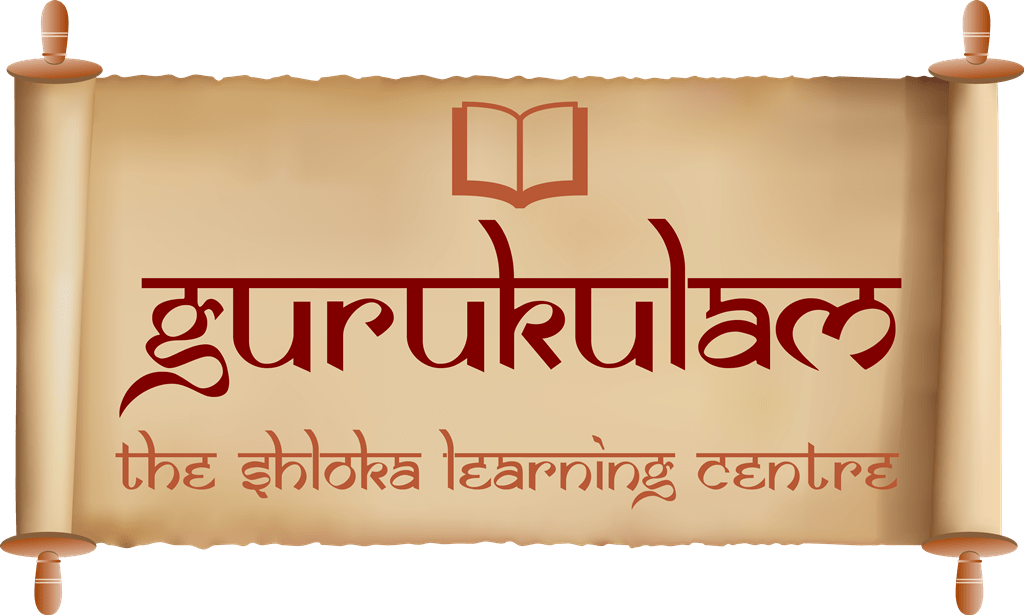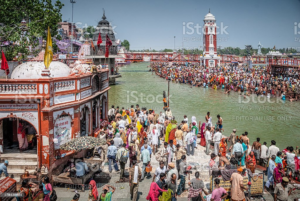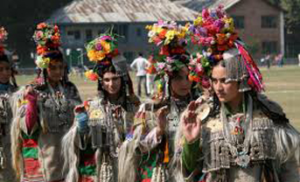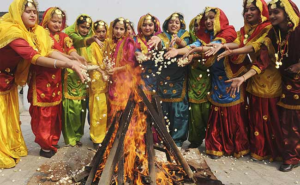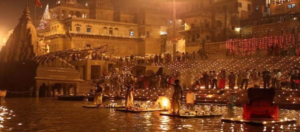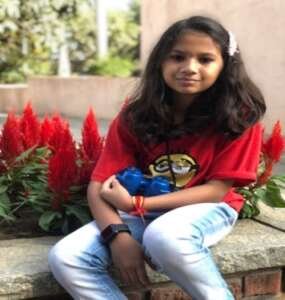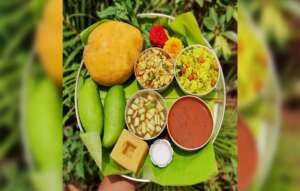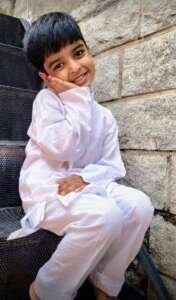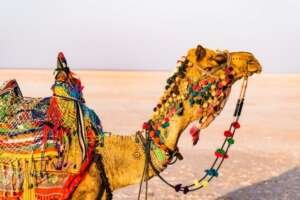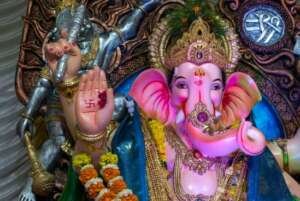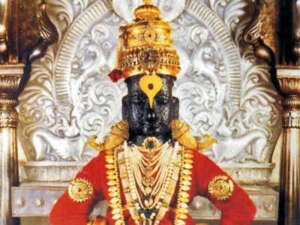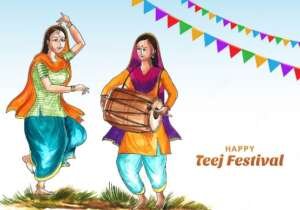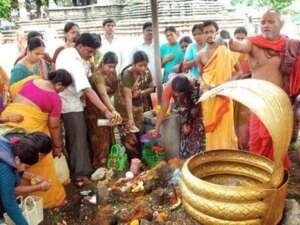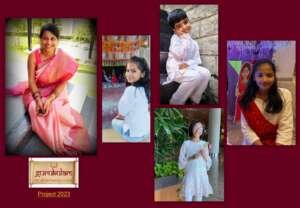Five Famous Festivals of India
Five Famous Festivals of North India
Jammu Kashmir, Punjab, Himachal Pradesh, Haryana, Uttar Pradesh and the newly formed Uttarnachal state are the six states, which make the North part of India.
Kumbh Mela
The month long Kumbh Mela of Allahabad is one of the largest fairs of the world and is attended by millions of pilgrims from all over India as well as the devout from the world over. This religious occasion takes place in the months of January-February, on the banks of the holy confluence of rivers Ganga, Yamuna and the mythical Saraswati. It is believed that a holy dip on this occasion washes all the sins. There is annual Kumbh, six yearly and the most important is the one that comes every twelve years.
Vaitha – Vatur – Truvah
The state is full of surprises and is known as the paradise of India. Jammu and Kashmir are actually the crown of India, the northern most state. The mystic Leh, the beautiful valleys of Kashmir and the huge Shrines of Jammu, comprise a treat for the travellers. Followers of Islam, Buddhism and the Hindus, all stay in peace in this state blessed with natural abundance. The great Himalayan mountain range forms a superb background to this unique state.
All the Hindu, Muslim, Sikh and Buddhist festivals are celebrated here with all the enthusiasm and vibrancy. Vaitha – Vatur – Truvah which literally means thirteenth day of source of River Jhelum. It is held at an ancient temple at Verinag, the source of the Jhelum. Hindus and Muslims participate in this festival.
Lathmar Holi
Some unique festivals to Uttar Pradesh includes the most famous, Lathmar Holi.48 km. from Mathura at Barsana, is celebrated the famous Lathmar Holi of Braj. Tradition has it that Krishna from Nandgaon use to come to Barsana to play Holi with Radha along with his Gopi friends. The Gopis after merriment chased them away by beating them with lathis or big bamboo sticks. Hence the name. To this day, the village women beat up the men from Nandgaon and chase them away. Pic Courtesy : Google
Pic Courtesy : Google
Lohri
Lohri is a popular winter Punjabi and Himachali folk festival celebrated primarily in Northern India.The significance and legends about the Lohri festival are many and these link the festival to the Punjab region. It is believed by many that the festival marks the passing of the winter solstice. Lohri marks the end of winter, and is a traditional welcome of longer days and the sun’s journey to the northern hemisphere by people in the northern region of the Indian subcontinent. It is observed the night before Makar Sankranti, and according to the solar part of the lunisolar Vikrami calendar and typically falls about the same date every year (13 January).
Kartik Purnima
The beautiful Kartik Purnima festival or the Dev Deepawali celebrated in Varanasi or Benaras, is a visual delight. Varanasi is the land of festivals. The full moon night after Diwali falling in November – December is the sacred day for all the people. The ghats of Varanasi come alive with thousands of brightly lit earthen lamps. The lamps then are gently left on the River. Visitors throng in large numbers to watch this spectacular event.
Five Famous Festivals of South India
Makar Sankranthi
Every year Makar Sankranti is celebrated in the month of January. This festival is dedicated to the Hindu religious sun god Surya.Makar Sankranti is a Hindu harvest festival that marks the end of winter and the beginning of longer days as the sun moves northward. This period is also known as Uttarayan and is considered to be extremely fortunate. The harvest festival is a religious and seasonal celebration.
Makara Sankranti is regarded as important for spiritual practices and accordingly, people take a holy dip in riversKaveri, Krishna, Godavari. A shared cultural practice found amongst Hindus of various parts of India is making sticky, bound sweets particularly from sesame and a sugar base such as jaggery. This type of sweet is a symbolism for being together in peace and joyfulness, despite the uniqueness and differences between individuals.For most parts of South India, this period is a part of early stages of the Rabi crop and agricultural cycle, where crops have been sown and the hard work in the fields is mostly over. The time thus signifies a period of socializing and families enjoying each other’s company, taking care of the cattle, and celebrating around bonfires,
In Karnataka, this is the Suggi harvest festival for farmers of Karnataka. On this auspicious day, girls wear new clothes to visit near and dear ones with a Sankranti offering in a plate and exchange the same with other families. This ritual is called “Ellu Birodhu.” Here the plate would normally contain “Ellu” (white sesame seeds) mixed with fried groundnuts, neatly cut dry coconut and fine cut bella (jaggery). The mixture is called “Ellu-Bella” The plate contains shaped sugar candy moulds Sakkare Acchu, with a piece of sugarcane. There is a saying in Kannada “ellu bella thindu olle maathadi” that translates to ‘eat the mixture of sesame seeds and jaggery and speak only good.’
While in Tamil Nadu, the festival is observed for 3-4days.Day 1 is Bhogi Pongal,Day 2 is Surya Pongal, Day 3 is Mattu Pongal, Day 4 is Kanum Pongal.
The Pongal festival begins on the day called Bhogi Pongal, and it marks the last day of the Tamil month Marghali.On this day people discard old belongings and celebrate new possessions. The people assemble and light a bonfire in order to burn the heaps of discards. Houses are cleaned, painted and decorated to give a festive look. The horns of oxen and buffaloes are painted in villages.
Surya Pongalis the second and main festive day, and is dedicated to the sun god. The day is celebrated with family and friends, with the Pongal dish prepared in a traditional earthen pot in an open space in the view of the sun.
Mattu Pongal is celebrated on the 3rdday. Mattu refers to “cow, cattle”. Onthis day, cattle are decorated – sometimes with flower garlands or painted horns, they are offered bananas, a special meal and worshipped
Kanum Pongal, also called the Kanu Pongal, the fourth day of the festival, marks the end of Pongal festivities for the year.The word kanum means “to visitrelatives and family”

Pongal celebrations in Tamil Nadu. Yellu-Bella of Karnataka.(Image Courtesy:google)
Ugadi
Ugadiis a popular festival in south India. It marks the first day of the new year in Andhra Pradesh, Karnataka, and Telangana. Falling near the spring, this day plays a vital role in the cultural heritage of these parts of India. The day is observed using traditional rituals, decorations, and food. Ugadi heralds new beginnings and gives a sense of completion as it also marks the end of the previous year. Ugadi has been an important and historic festival of the Hindus. It is festively observed in these regions on the month of Chaitra. This typically falls in April month. It also falls during the Tamil month of either Panguni or Chithrai.
Like the new leaves, new buds, fresh breeze and bright sunlight, the Ugadi festival also symbolises the birth of a new era. It is celebrated on ShuklaPaksha (bright fortnight) of the first month Chaitra of the Hindu calendar and also the first season, Vasanta –Ritu Spring). As all these elements works together, the Ugadi festival importance is very significant.
SpiritualSignificanceofUgadi: According to the Hindu belief, Lord Brahma, the creator started creating the earth on this auspicious day.Yugaadi is one among the several names of Lord Sri Maha Vishnu. Lord Vishnu is addressed as Yugaadikrit, the one who is the creator of Yugas. So, this day is the most auspicious day to worship the Para Brahma, who is creator of the Time element.The day is observed by drawing colourful patterns on the floor, mango leaf decorations on doors called torana, buying and giving gifts such as new clothes, giving charity to the poor, oil massages followed by special baths, preparing and sharing a special food called pachadi, and visiting Hindu temples.
Special dishes are prepared for the occasion. In Karnataka, foods such as Holige, Obattu, and mango pickles are made. In Andhra Pradesh, foods such as pulihora, bobbatlu (Bhakshalu/ polelu/ oligale), New Year Burelu and Pachadi, and preparations made with raw mango go well with the occasion.
The significance of UgadiPachadi is immense as it symbolises the essence of life. This special dish is prepared with ingredients like:Jaggery (sweet): symbolising happiness, Salt (salty): showing interest in life, Tamarind (sour): symbolising challenges,Neem flowers (bitter): shows difficulties of life, Raw mango (tangy): indicating surprises and new challenges, Chilli powder (spicy): showing the angry moments in one’s life.
The dish is significant as it has all the tastes of life. It teaches that life is a mixture of all the emotions. Each and every ritual followed on this day, has its own significance. Hanging of mango leaves and placing a kalash near the door or the calling of the priest to make the yearly forecast are all part of Ugadi significance and symbolism
Pachadi (image courtesy:Google)
Ganesha Chaturthi
GaneshChaturthi also known as VinayakChaturthi is a Hindu festival commemorating the birth of the god Ganesha. The festival is marked with the installation of Ganesha’s clay idols privately in homes and publicly on elaborate pandals.Offerings and prasada from the daily prayers, that are distributed from the pandal to the community, include sweets such as modaka as it is believed to be a favourite of Ganesha. The festival celebrates Ganesha as the God of New Beginnings and the Remover of Obstacles as well as the god of wisdom and intelligence and is observed throughout South India.
The date for the festival is usually decided by the presence of Chaturthi Thithi. A life-like clay model of Lord Ganesha is made 2-3 months prior to the day of Ganesh Chaturthi. The size of this idol may vary from 3/4th of an inch to over 25 feet. On the day of the festival, it is placed on raised platforms in homes or in elaborately decorated outdoor tents for people to view and pay their homage. The priest then invokes life into the idol amidst the chanting of mantras. This ritual is called ‘prana pratishtha’. After this the ‘shodashopachara’ (16 ways of paying tribute) follows. Coconut, jaggery, 21 ‘modaks’,21 durvablades and red flowers are offered. The idol is anointed with red unguent or sandal paste .Throughout the ceremony, Vedic hymns from the Rig Veda and Ganapati Atharva Shirsha Upanishad, and Ganesha stotra from the Narada Purana are chanted.On the 11th day, the image is taken through the streets in a procession accompanied with dancing, singing, to be immersed in a river or the sea symbolizing a ritual see-off of the Lord in his journey towards his abode in Kailash while taking away with him the misfortunes of all man. All join in this final procession shouting “Ganapathi Bappa Morya, Pudhchya Varshi” (O father Ganesha, come again early next year).
Gowri Habba
Gowri Habba is a celebration dedicated to Gowri, mother of Lord Ganesha. Gowri Habbà is celebrated one day prior to Ganesh Chaturthi. The two festivals together are often referred to as Gowri Ganesha Habba.
Gowri Habba is performed by both married and unmarried women. A golden image of Goddess Parvati is worshipped on the Gowri Habba day. The popular belief is that Goddess Parvati visits her devotees on the day and Lord Ganesha comes on the next day (Ganesh Chaturthi day) to take her back to Kailasa, the abode of Lord Shiva.Prayers are believed to bring purification to the soul and induce dedication and concentration.
Bagina: A set of giveaways made of traditional items are made. Each set includes packets of turmeric (arishina, yellow in colour), vermilion (kunkuma, red in colour), bangles, beads, blouse piece, coconut, some cereals and sweets such as jaggery. These sets are gifted to married women in the community, as a symbol of sharing happiness and prosperity.

Clay ganesha idols (image courtesy:Google) Gowri Bagina (image courtesy:Google)
Navrathri
Navaratri is an annual Hindufestival observed in the honour of the goddess Durga. It spans over nine nights in the month of Sharada. It is observed for different reasons and celebrated differently in various parts of India.
The festivities extend beyond goddess Durga and various other goddesses such as Saraswati and Lakshmi. Deities such as Ganesha, Kartikeya, Shiva, and Parvati are regionally revered. For example, a notable pan-Hindu tradition during Navaratri is the adoration of Saraswati, the Hindu goddess of knowledge, learning, music, and arts, through AyudhaPuja. On this day, which typically falls on the ninth day of Navaratri, peace and knowledge is celebrated. Warriors thank, decorate, and worship their weapons, offering prayers to Saraswati. Musicians upkeep, play, and pray their musical instruments. Farmers, carpenters, smiths, pottery makers, shopkeepers, and all sorts of tradespeople similarly decorate and worship their equipment, machinery, and tools of trade. Students visit their teachers, express respect, and seek their blessings.This tradition is particularly strong in South India
The festival is associated to the prominent battle that took place between Durga and the demon Mahishasura to celebrate the victory of good over evil. These nine days are solely dedicated to Durga and her nine avatars – the Navadurga. Each day is associated to an incarnation of the goddess.
In Karnataka, Navaratri is observed at home and by lighting up Hindu temples, cultural sites, and many regal processions. It is locally called Dasara and it is the state festival of Karnataka. Of the many celebrations, the MysuruDasara is a popular celebration. On the ninth day of Dasara, called Mahanavami, the royal sword is worshipped and is taken on a procession of decorated elephants and horses. Also, AyudhaPuja is dedicated to Saraswati, in which military personnel upkeep their weapons and families upkeep their tools of livelihood, both offering a prayer to Saraswati, as well as Parvati and Lakshmi. The day after Navaratri, on Vijayadashami, the traditional Dasara procession is held on the streets of Mysore. An image of the Goddess Chamundeshwari is placed on a goldenhauda on the back of a decorated elephant and taken on a procession, accompanied by dance groups, music bands, decorated elephants and horses. Another Navaratri tradition in Karnataka has been decorating a part of one’s home with art dolls called Gombe or Bombe, similar to Goludolls of Tamil Nadu.


Mysore Dasara (image courtesy:Google) Dasara Gombe or Golu (image courtesy:Google)
Deepavali
Diwali also known as the Festival of Lights. It is one of the most important festivals where it generally lasts five days during the month ofKartika. Diwali symbolises the spiritual “victory of light over darkness, good over evil, and knowledge over ignorance”.The festival is widely associated with Lakshmi, goddess of prosperity and Ganesha, God of wisdom and the remover of obstacles. Furthermore, it is a celebration of the day Rama returned back to his kingdom in Ayodhya with his wife Sita and his brother Lakshmana after defeating the demon, Ravana.
In the South, Diwali festival often commemorates the conquering of the AsuraNaraka, a powerful king of Assam, who imprisoned tens of thousands of inhabitants. It was Krishna who finally subdued Naraka and freed the prisoners. Diwali Festival in the south is celebrated in the Tamil month of thula, ‘naraka chaturdasi’ thithi, preceding amavasai. The preparations begin the day before, when the oven is cleaned, smeared with lime, four or five kumkum dots are applied, and then it is filled with water for the next day’s oil bath. The house is washed and decorated with kolam (rangoli) patterns . In the pooja room, betel leaves, betel nuts,fruits, flowers, sandal paste, kumkum, gingelly oil, turmeric powder, scented powder are kept. Crackers and new dresses are placed in a plate after smearing a little kumkum or sandal paste.
Dhanteras:These five festive days begin each year on the Ashvija Krishna Thrayodasi (thirteenth day of Hindu calendar in the month of Ashvija Krishna ) This day of the festival is called Dhanteras,it is considered auspicious to make new purchases. People buy gold, silver articles or even vehicles and home appliances.
Naraka Chaturdasi:The second day, the Naraka Chaturdasi, falls on the fourteenth day of Ashvija Krishna. This is the day when Narakasura King of Pragyotispura is slained by Lord Krishna.
Ashvija Krishna Amavasya:The third day is the Ashvija Krishna Amavasya or new moon worship goddess Lakshmi for prosperity. There is special puja at business institutions and houses. In the evening, lit lamps are placed at all doorways and windows of the house.
Kedara Gauri Vrata:On this day, special puja to Shiva called as Kedara Gauri Vrata is performed. It is said that Goddess Parvati performed this puja to attain half of Lord Shiva and hence Shiva became ‘Ardha Narishwara’. Lord Vishnu blessed with Vaikunta Loka observing Kedara Vrata. Lord Brahma got Hamsa Vahana (Swan Vehicle). Bhagyawati and Punyavati got a lot of wealth observing Kedara Vrata.
Balipadyami:The fourth-day, Balipadyami in Kartika Sukla, is celebrated on the occasion of Vamana stamping the most powerful and charitable Asura king Bali to Pathala Loka (netherworld). Bali is revered as one among the seven chiranjivis and returns to visit his kingdom on this day every year. On this day one can buy home appliances, goods and very auspicious for buying new things.
Worshipping King Bali:In the coastal parts of Karnataka, Diwali is also a day to worship King Bali. This ritual is called Balipadyami. As part of the ritual, farmers celebrate boisterously and offer food around their paddy fields.

King Bali(image courtesy: Google)
Five Famous Festivals of East India
Festivals are reflective of the culture, traditions and beliefs of the people of particular place. They bring people together and harbour peace, harmony and togetherness. This article describes the important festivals of East India.
Rath Yatra
Rath Yatra is a festival associated with Lord Jagannatha and is celebrated with great fervour in Odissa. Every yeara majestic procession carrying the statues of Lord Krishna (Or Jagannatha), Balaram, and Subhadra is pulled by the devotees to reach the Jagannath temple. It is celebrated annually in the Jagannath Temple of Puri, a city in Odissa. According to the scriptures, this tradition of Jagannath Rath Yatra was started after Goddess Subhadra,the younger sister of Lord Krishna expressed her desire to go around the city. Lakhs of devotees participate in the yatra every year.
Durga Puja
Durga puja is celebrated in West Bengal, Bihar, Assam, Tripura and Odissa. Durga Puja celebrates the victory of the goddess Durga over the demon king Mahishasura. It begins on the same day as Navratri, a nine-night festival in many northern and western states that more broadly celebrates the divine feminine (shakti).The festival ends on the tenth day (Vijaya Dashami) when devotees embark on a procession carrying the worshipped clay sculpture-idols to a river, or other water body, and immerse them, symbolic of her return to the divine cosmos and her marital home with Shiva in Kailash. Large Pandals with idols of Goddess Durga are worth a visit during this time.
Chhath
Chhath is celebrated in bihar. The rituals are observed over four days. It is dedicated to worshipping of Lord Sun for providing and maintaining life on Earth. They include holy bathing, fasting and abstaining from drinking water (vrata), standing in water, and offering prasad (prayer offerings) and arghya to the setting and rising sun.
Bihu
Bihu is celebrated in assam .Bihu festival coincides with the farming cycle – the seeding time (Bohag Bihu), completion of sowing (Kati Bihu) and harvesting (Magh Bihu). Assamese celebrate the Rongali Bihu with feasts, music and dancing. Some hang brass, copper or silver pots on poles in front of their house, while children wear flower garlands then greet the new year as they pass through the rural streets.
Saga Dawa
Saga Dawa is celebrated in Sikkim. Saga Dawa or the Triple Blessed Festival is an auspicious month for the Sikkimese Buddhists with prayers held throughout the month in various monasteries. On the full moon of this 4th month of the Tibetan calendar [celebrated as Buddha Purnima in the rest of India] is the main celebration.
By Aaradhya Pai
Five Famous Festivals of Western India
Rann Utsav is celebrated in Kutch, Gujarat. It is alsoknown as the Kutch festival. This festival is set amidst the vastly open White Sand Desert. It invites people to witness and live in the artificial tent city and experience the diverse districts of Gujarat. Rann Utsav takes place in winter every year. ‘Rann’ refers to as desert and ‘Utsav’ refers to as festival hence it is called ‘Desert Festival’ in English. It is the most eagerly awaited tourism events of India. It celebrates the artistic heritage of Kutch. The concept of Rann Utsav was envisioned by Hon’ble chief minister of Gujarat Shri Narendra Modi in the year 2006.
Ganesh Chaturthi is celebrated in Maharashtra. It is also celebrated all over India. It is also known as Vinayaka Chaturthi/Ganeshotsav. Ganeshaidol is brought home and worshipped for ten days, followed by immersion on the last day. Localities carry out a huge procession of the god to the river and immerse the idol in water shouting Ganapati Bappa Moriya which means – Ganesha we pray to you.It is normally celebrated in the month of August/September. Ganesha is known as the lord of wisdom and prosperity. It is celebrated in the sixth month of the Hindu Calendar. It is surrendered to lord Ganesha hence called ‘Ganesha/Vinayaka’ and it begins on the fourth day hence named as ‘Chaturthi’/ called ‘Otsav’ which means festival. The concept of Ganesha Chaturthi was initiated by Bal Gangadhar Tilak in the year 1893 in Pune, Maharashtra.
Mahashivratri is celebrated in the month of February. The festival is taken place in Maharashtra. We worship lord Viththala and Shiva. People chant Viththalchautsava as in ‘Marathi’, the language spoken in Maharashtra it means Viththala’ s Festival.On this festival we pray to lord Viththala and Shiva and offer food to God and perform rituals. These rituals are generally performed by Hindus. People generally visit temples and offer lord flowers, money and food and in return get back prasad. In Mumbai it is generally a ritual to bow down before God and seek blessing and get a very long yellow and red marking on their forehead with a grain of rice called Teeka or Tilak. People meet in big grounds with an idol of lord and bow down together and seek blessing of God and women and girls dance to the songs of lord Viththala. Mahashivratri is the second most important festival in Maharashtra after Ganesh Chaturthi.
Teej is the festival of swings celebrated in August. The festival is taken place in Jaipur and Rajasthan every year. It is dedicated to the Goddess Parvati and Lord Shiva and marks the advent of monsoon. Swings are hung from trees and decorated with flowers. Young girls and women sing songs. An elaborate procession is taken out on the streets of Jaipur and Rajasthan for twoconsecutive days on the festive occasion. It is also known as Hariyali or Hartalika Teej. Hariyali and Hartalika means green hence women and young girls are suggested to wear green on this day. The first day of Teej is called Dar Khene Din. On this day the women assemble at one place in their finest attire and start dancing and singing devotional songs. Amidst all this, the grand feast takes place. What is unusual about this day is that the feast is hosted by men. Women, who work hard throughout the year, do not have to do anything that day. The second day is the day of fasting. Most women abstain strictly from food and drinks with a belief that their devotion to the gods will be blessed with longevity, peace and prosperity of their husband and family.
Nagpanchami comes with onset of Shravan month falling in August. This festival brings in a list of festivities that go on till January. Nagpanchami is dedicated to Snake God. The ladies worship the snake and request him to leave the fields for some time so that the men folk can begin sowing and ploughing. When the men are done the women pray back to the snake god that the snakes can be released to the field again. It is celebrated in Maharashtra with full josh. The women help the men by buying the saplings on the previous day and providing thousands of them while the men plant. The women sit in font of the lord praying for the safety of their men from the snakes. People worship snakes in an effort to appease Lord Shiva, who carries a cobra around his neck. Devotees worship live cobras on Nag Panchami Day and offer them milk and other things. On this day, devotees also refrain from digging the earth.
By Sahana Srinivas
